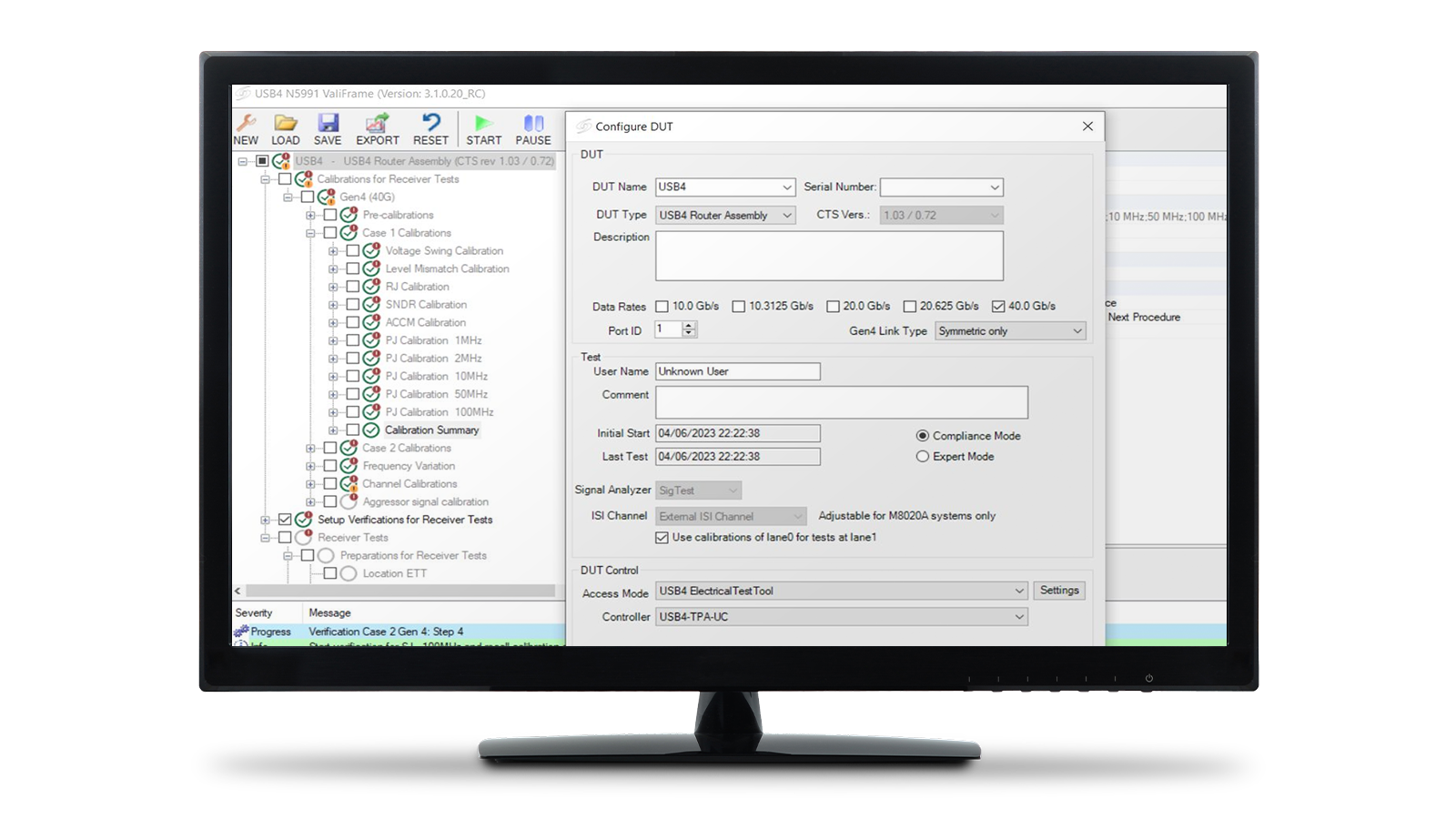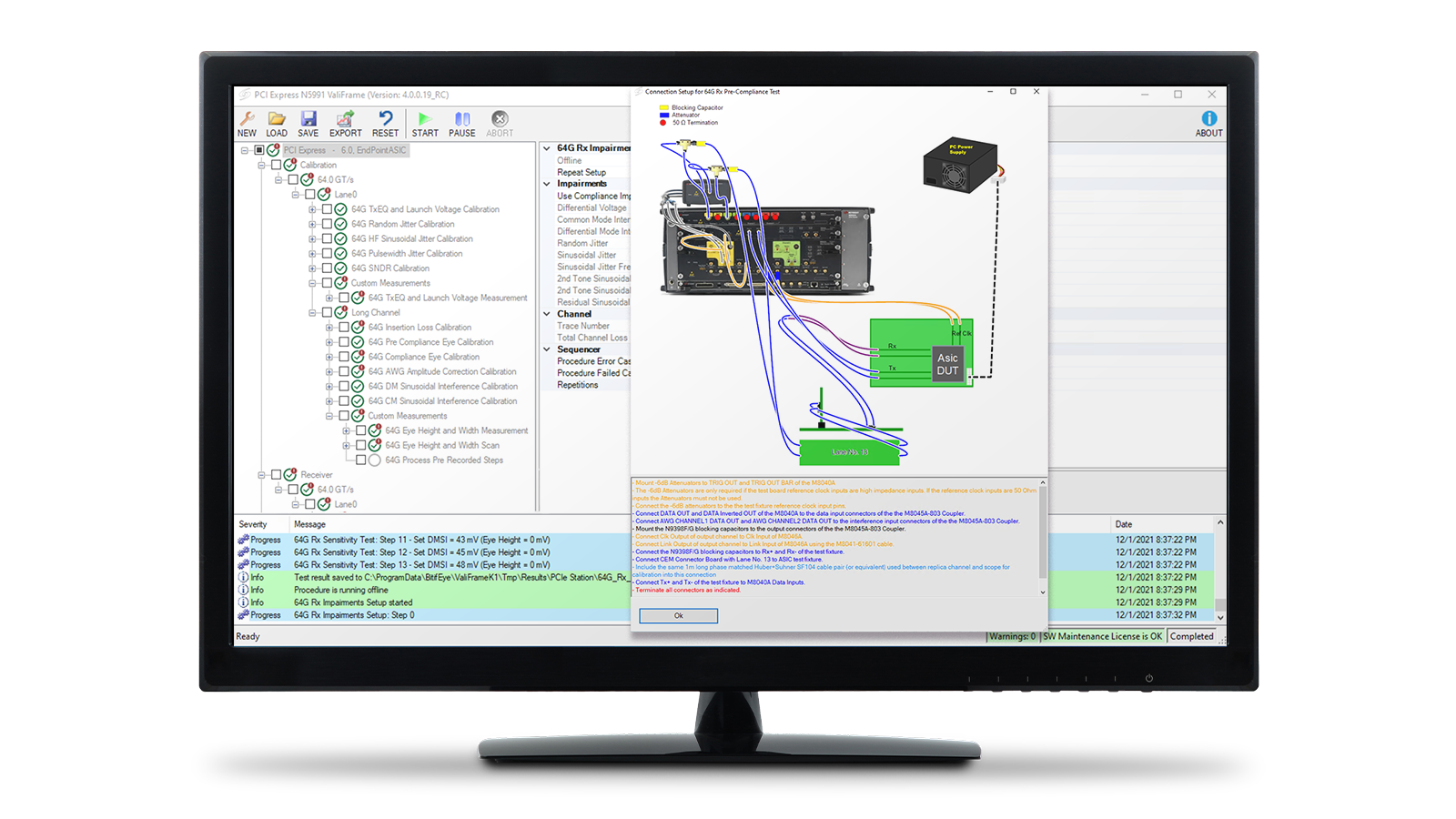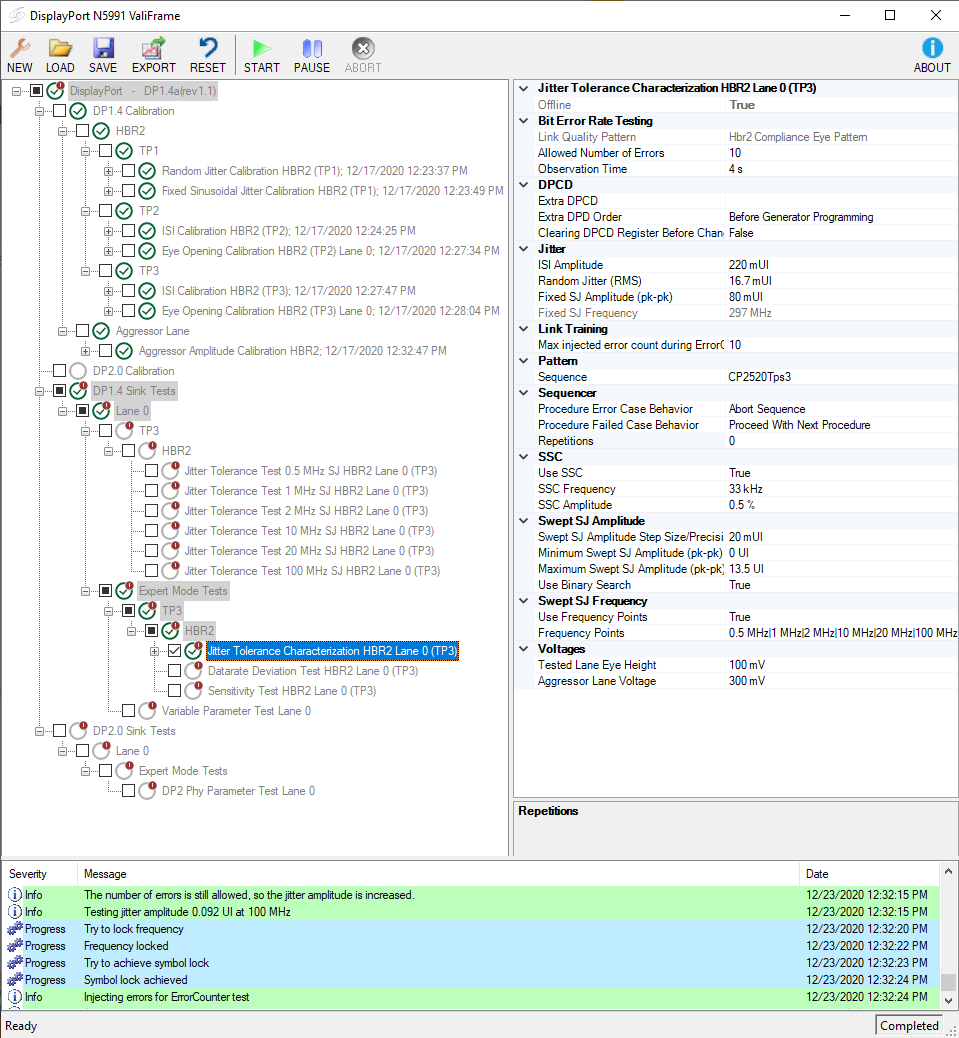What are you looking for?
Receiver Compliance Test Automation Platform
Test a wide range of digital high-speed buses with a fast and reliable solution including system calibration and one button compliance tests.
Highlights
Supported standards currently include PCIe, USB4, MIPI, among others, with continuous additions of other standards allowing for receiver tests of a wider range of digital buses to meet future industry needs. N5991 increases testing speed, reduces test costs and ensures greater thoroughness than a manual equivalent.
The guided setup provides automated fast stress signal calibration and receiver compliance measurement functions that can independently be enabled or disabled through the system modularity. Receiver test results are provided in HTML or Excel format and can be of multiple levels of detail with customizable repetition.
Keysight partner BitifEye Digital Test Solutions, a specialist for test automation, provides customizations and integrated solutions based on N5990/N5991 and the Keysight instrument portfolio. For more information on BitifEye and their range of complementary products and services, see www.bitifeye.com.
- Characterization mode for in-depth testing
- Supports real-time parameter changes of amplitude levels, etc.
- Single and multi-lane device testing
- One-button compliance capability to simplify the test procedure
- Link training suites available that also feature debugging of DUTs
PCI-SIG®, PCIe® and the PCI Express® are US registered trademarks and/or service marks of PCI-SIG

Free Trials
A 30-day trial license can be requested from our partner BitifEye.
Use Cases
This software is featured in the following solutions
Featured Resources for the Receiver Compliance Test Automation Platform
Related Products
Extend the Capabilities
FREQUENTLY ASKED QUESTIONS - Receiver Test Automation
WHAT IS RECEIVER TEST AUTOMATION?
Receiver test automation software eases the burden of configuring hardware and executing repeatable and reliable receiver compliance tests on high-speed digital receiver DUTs (devices-under-test). The software configures the devices and runs through the compliance test specification for the relevant data standard. Receiver testing can be an exacting and time-consuming manual process without test automation software, eliminating human error and increasing the efficiency of the testing.
WHY IS RECEIVER TESTING IMPORTANT?
Receiver testing is crucial to ensure the interoperability of devices, specifically that transceivers can reliably receive and interpret high-speed digital signals. This helps guarantee the performance, reliability, and compliance to standards used in communication systems in various applications like data centers, telecommunications, and high-performance computing.
HOW DOES RECEIVER TESTING WORK?
Receiver tests are often performed with hardware such as high-performance real-time oscilloscopes and bit error ratio testers (BERTs). Arbitrary waveform generators (AWGs) may be used to generate complex stressed signals, which are transmitted to the DUT. The DUT interprets the signal sent to the BERT's error detector. The BERT then determines the bit error ratio performance of the DUT compared to the original signal and tells the user whether the device meets the performance threshold outlined in the standard's specification.
HOW DOES THE AUTOMATION TEST PLATFORM ENHANCE TESTING EFFICIENCY?
The automated test software provides a guided setup and automated stress signal calibration. It facilitates interactions between test hardware and DUTs to perform measurement and analysis for receiver conformance or compliance tests. The software provides test results in customizable formats for standards certification or to aid in quick error analysis and debugging.
CAN THE RECEIVER TEST AUTOMATION PLATFORM BE USED FOR IN-DEPTH TESTING?
The software platform supports in-depth testing via its characterization mode, allowing for real-time parametric changes, and in debug mode, which provides detailed analysis of the device's performance and helps engineers identify issues in the design that may be preventing passing interoperability or conformance tests.
WHAT STANDARDS ARE CURRENTLY SUPPORTED BY THE KEYSIGHT RECEIVER COMPLIANCE TEST AUTOMATION PLATFORM?
The following applications have Keysight compliance test automation software: USB3.2, USB4, USB4 Version 2.0, PCIe 4.0, PCIe 5.0, PCIe 6.0, DisplayPort 2.0, MIPI M-PHY v5.0 and C-HPY, HDMI 2.1, SATA 3, DDR5, IEEE 802.3ck, OIF-CEI-5.0, among others. Some, but not all, use the N5990/N5991 platform.
WHAT STANDARDS ARE CURRENTLY SUPPORTED BY THE KEYSIGHT RECEIVER COMPLIANCE TEST AUTOMATION PLATFORM?
Keysight receiver test software runs on M8000 series bit error ratio testers (BERTs). The maximum data rate of the digital standard under test determines which BERT and test automation software to choose. Receiver test software for the latest 100 and 200 Gb/s IEEE 802.3ck and OIF-CEI standards, for example, will require a 120 GBd BERT (M8050A), while protocols such as USB4 and PCIe 6.0 can use a 64 Gbd BERT (M8040A). For lower speed or NRZ-only standards, a 32 GBd BERT (M8020A) may be most helpful. Please refer to the software datasheet for more software and hardware compatibility information.
Want help or have questions?


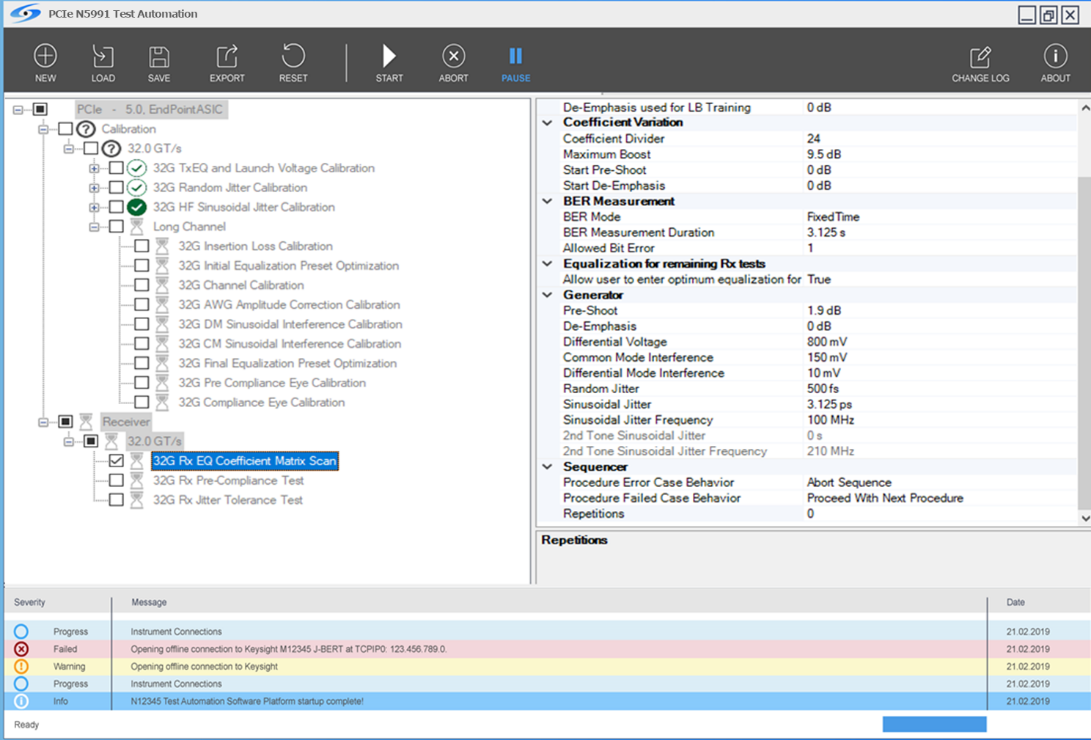
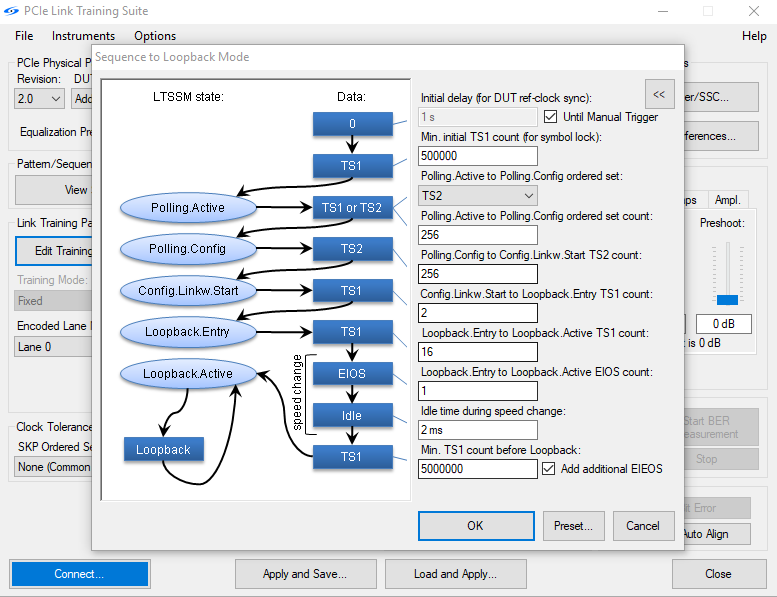



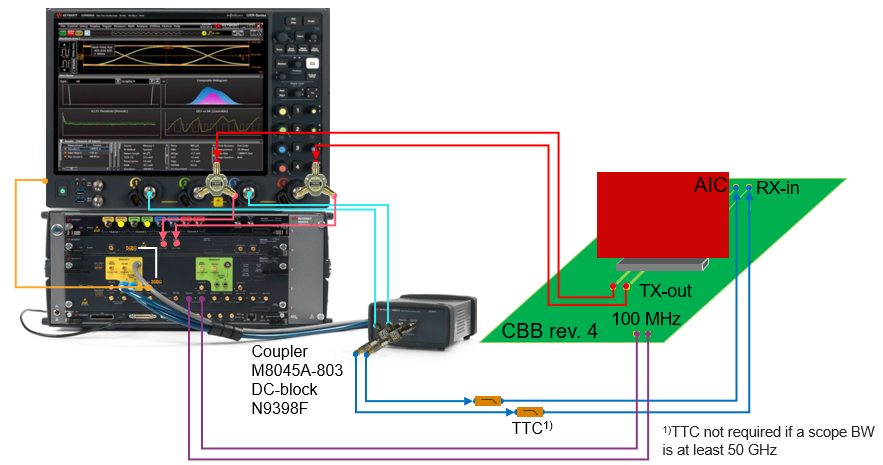












.png)
